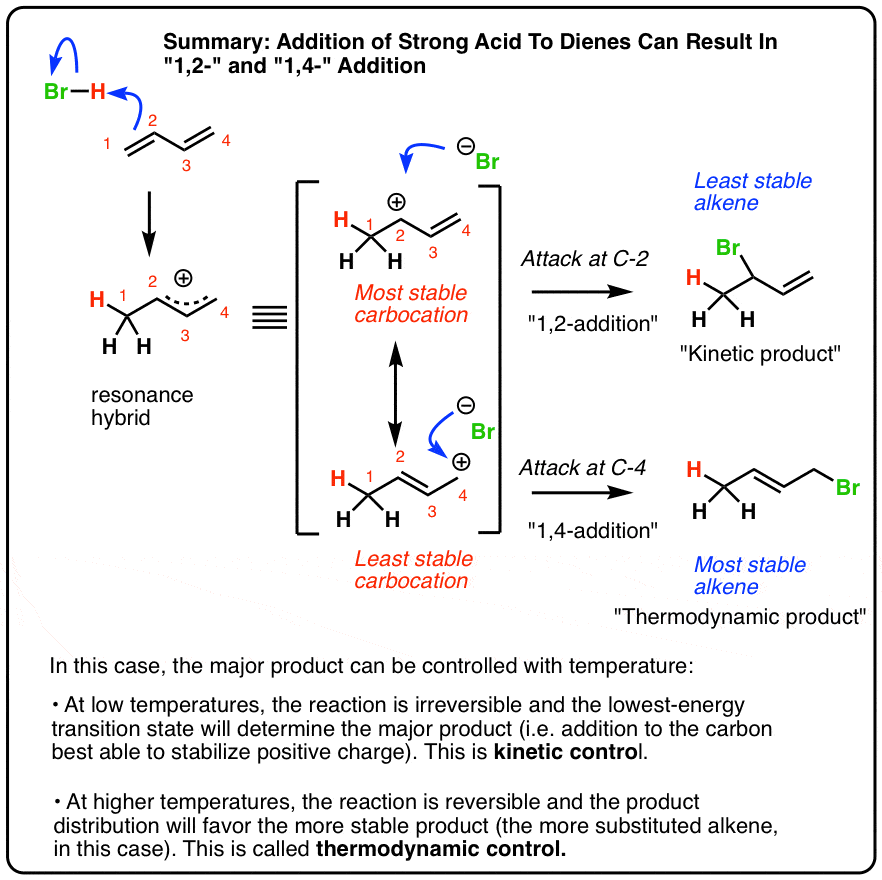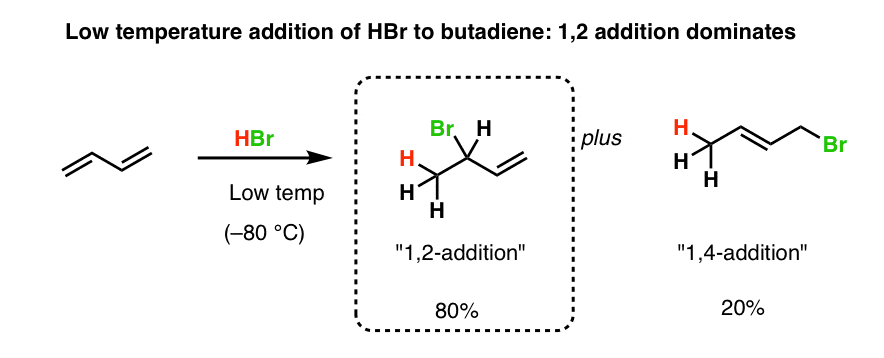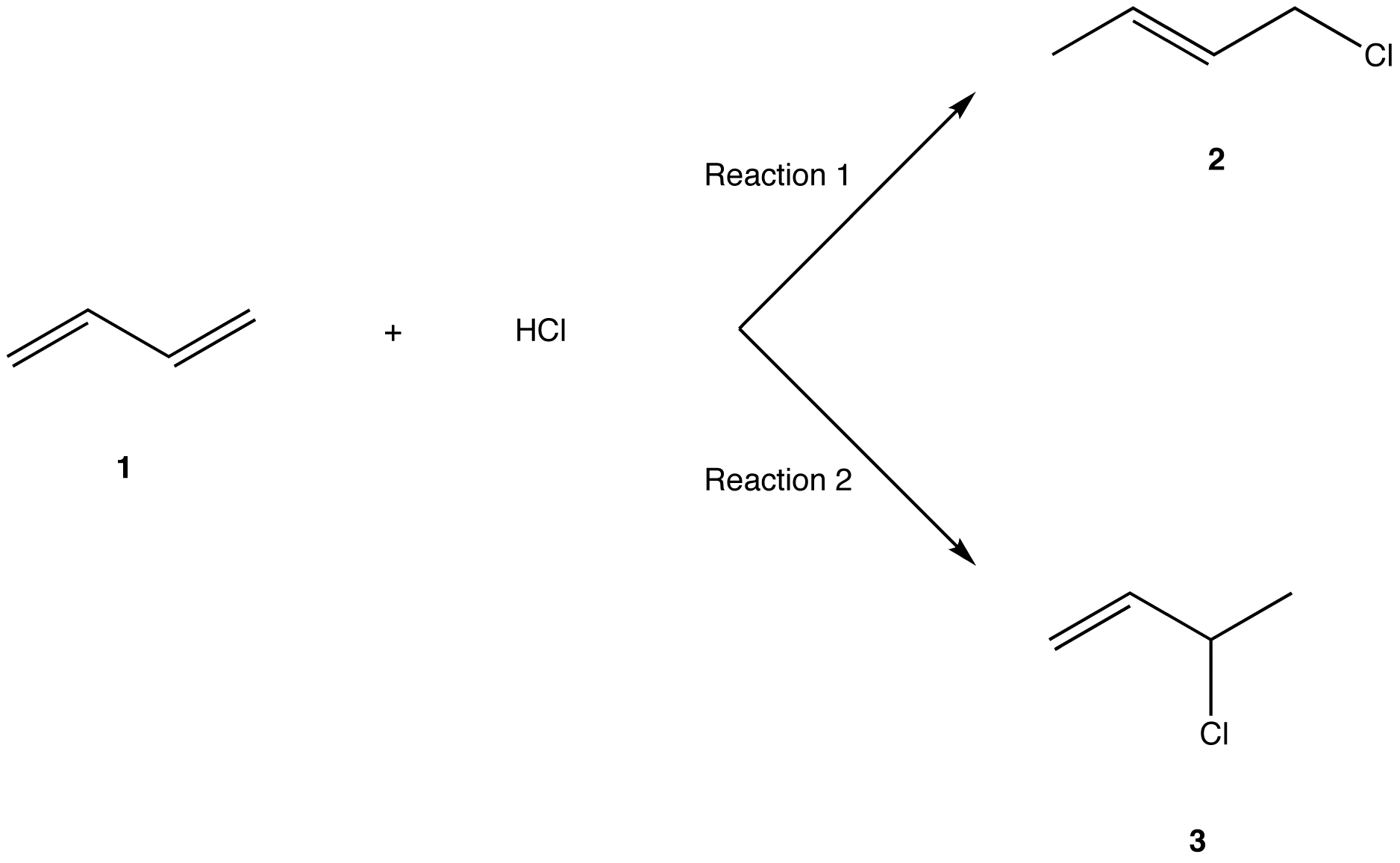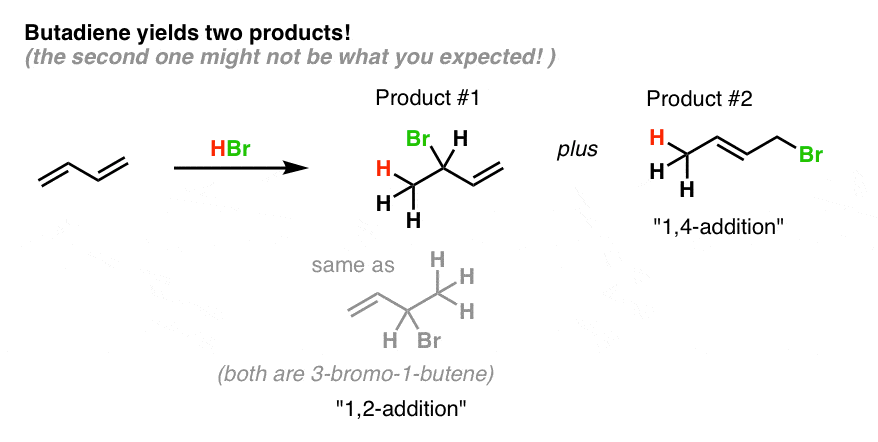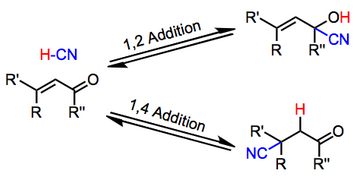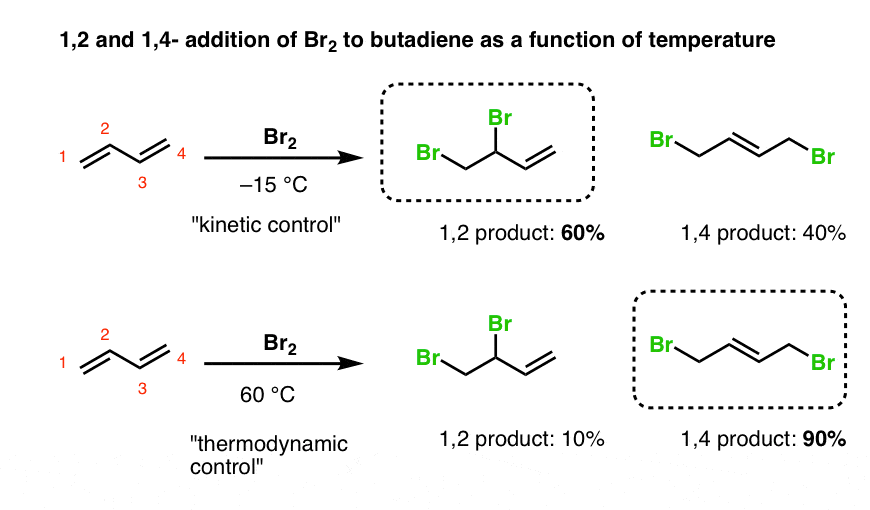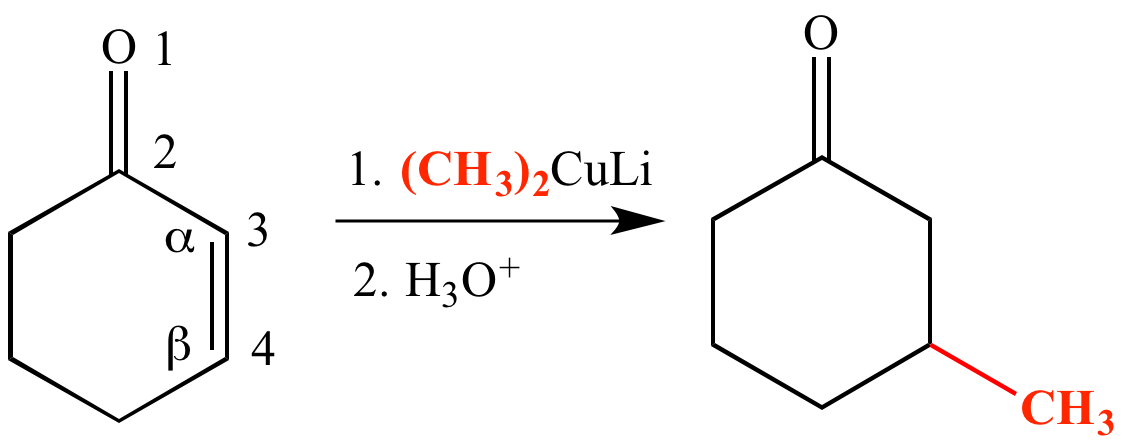1 2 Vs 1 4 Addition

The 1 4 adduct is the thermodynamic product of the reaction since it is the more stable product.
1 2 vs 1 4 addition. Br are on adjacent carbons and br has added to the most substituted. The expected addition product from reactions of this kind is the result of 1 2 addition i e. They are formed by a 1 4 and 1 2 addtion respectively. The regiochemistry changes when the reaction is carried out at lower temperatures.
Bonding at the terminal carbon atoms of a conjugated diene with a shift of the remaining double bond to the 2 3 location these numbers refer to the four carbons of the conjugated diene and are not. For example the addition of hydrogen bromide to 1 3 butadiene at temperatures below zero leads mainly to the 1 2 addition product while addition reactions run at temperatures above 50 c with these chemicals produces mainly the 1 4 addition product. Bonding to the adjacent carbons of a double bond the unexpected product comes from 1 4 addition i e. Recent progress in copper i catalysed addition of grignard reagents is reviewed throughout this chapter comparing and contrasting the well established 1 4 selectivity of cu i ligand complexes with the newly.
In org 1 we learned that addition of hcl and hbr to normal isolated alkenes such as 1 butene just gives one product the markvonikoff product 1 2 addition where the h and the nucleophile e g. Two electrophilic addition reactions could occur between 1 3 butadiene 1 and hydrogen chloride. 1 4 addition is an electrophilic addition reaction of conjugate dienes. 1 4 addition to dienes and kinetic control vs thermodynamic control to recap.
Nucleophilic conjugate addition is a type of organic reaction ordinary nucleophilic additions or 1 2 nucleophilic additions deal mostly with additions to carbonyl compounds. In reaction 1 the net reaction is addition of a hydrogen atom to c 1 and a chlorine atom to c 4 in 1. The recent discovery that copper i is able to catalyse the asymmetric 1 2 addition of grignard reagents to α β unsaturated as well as aromatic ketones was a true revelation. One of the confusing parts of diene chemistry is the fact that they can product multiple products specifically 1 2 addition products and 1 4 addition products.
Dienes undergo two major reactions which include diels alder reactions and electrophilic addition usually of hcl or hbr but other groups are possible. The 1 2 addition starts predominating because of the proximity effect. Hence reaction 1 is called 1 4 addition and its product 2 1 4 adduct.
